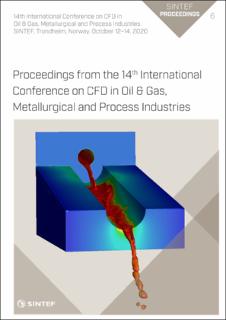| dc.description.abstract | Gas embolotherapy is a recent potential cancer treatment. The technique is based on starving the tumors by cutting off the blood supply using perfluorocarbon (PFC) bubbles. The volatile PFC droplets are injected in the circulatory system, and in the region of the tumor, these droplets are made to vaporize using high-intensity ultrasound pulses. As the bubbles are expected to encounter bifurcation during its flow in the vessels, it is imperative to develop an understanding of bubble splitting at the bifurcations to avoid nonhomogeneous splitting, undesirable bioeffects. Splitting dynamics has been studied for symmetric bifurcation angle. In this work, we investigate the splitting dynamics of a gas bubble at the symmetric, two-dimensional (2D) bifurcation. The volume of fluid method, which employs a single fluid formalism to solve for two-phase flow by considering an additional advection equation for a color function to identify the phases, is used to model the flow. The pressure jump caused by surface tension is modeled by approximating the surface tension force as a body force in the vicinity of the interface. Initially, the entire domain is filled with the liquid phase, i.e., blood. As the flow Reynolds number is 10-100, blood is considered to be a Newtonian fluid. Once a steady solution for liquidonly flow is obtained, a bubble is introduced in the channel having a capsular shape. The bubble takes a steady shape after a few ms. The results show that at the higher capillary number (Ca = 0.0231), homogenous splitting occurs for all bifurcation angles. Similarly, at lower capillary number (Ca = 0.00231) and low bifurcation angle (α = β = 15°, 30°, and 45°), bubble split homogenously. In contrast, at a higher bifurcation angle (α = β = 60°) bubble does not split and is pushed in the daughter vessel. The critical bifurcation angle exists between α = β = 45°-60°, where capillary forces become dominant and the bubble does not split. | en_US |

